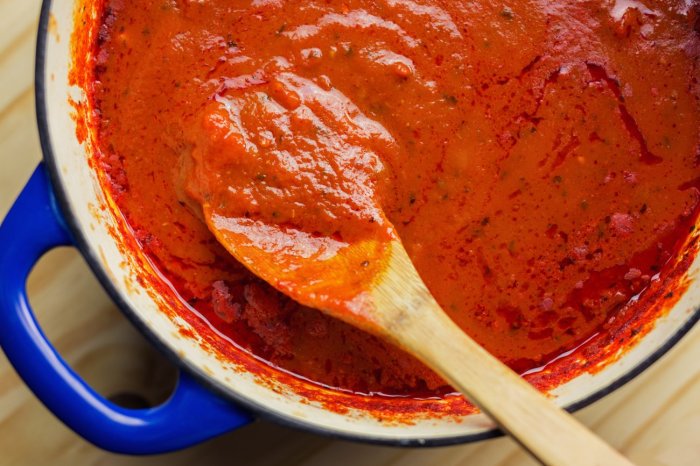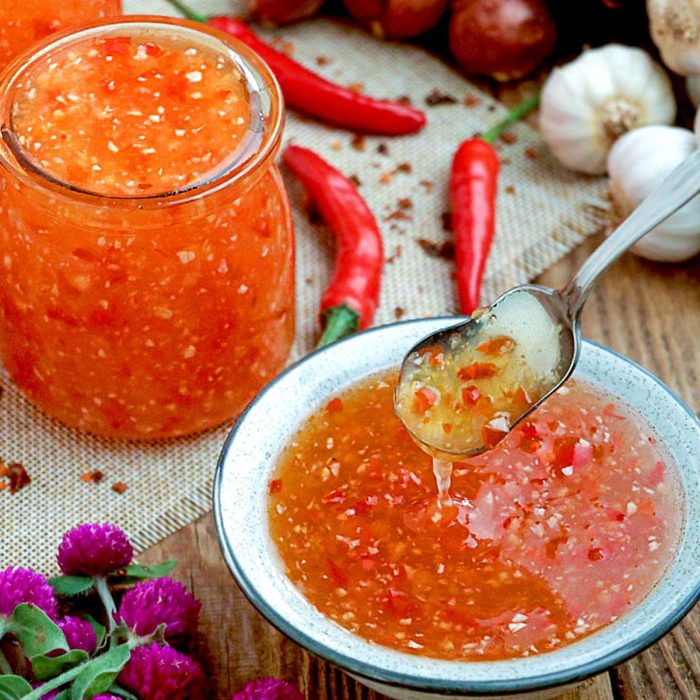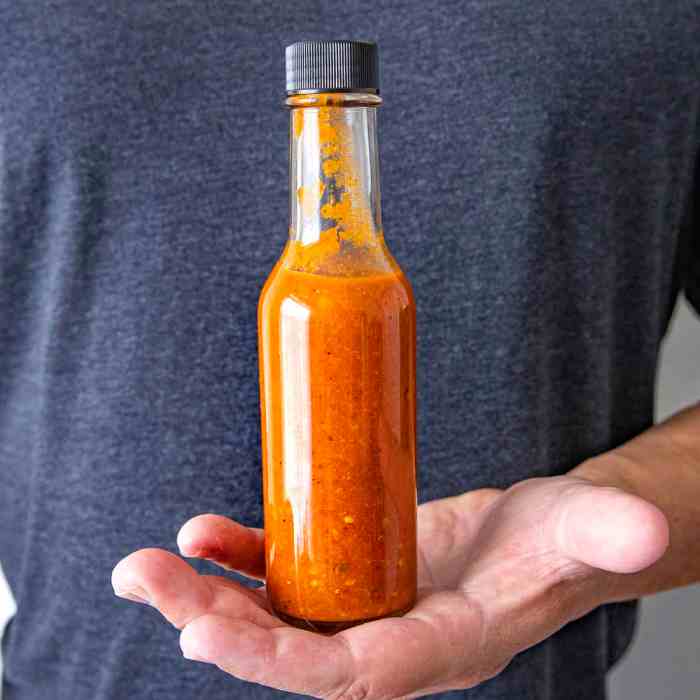Angry Sauce Recipe A Fiery Guide
Understanding Angry Sauce: Angry Sauce Recipe

Source: archanaskitchen.com
Angry sauce recipe – Angry sauce, a fiery condiment gaining popularity, transcends a simple hot sauce. Its defining characteristic lies in a complex interplay of heat, flavor, and often, a unique texture. This exploration delves into the nuances of angry sauce, from its origins to diverse recipes and serving suggestions.
Defining “Angry Sauce”

Source: foxyfolksy.com
Angry sauce is characterized by its intense heat, typically derived from a blend of chili peppers, often exceeding the spiciness of many commercially available hot sauces. The flavor profile goes beyond pure heat, incorporating elements of sweetness, acidity, and sometimes smoky or fruity notes, creating a multi-layered sensory experience. Unlike many hot sauces that focus primarily on a singular chili pepper, angry sauce often uses a combination, resulting in a more complex and nuanced flavor profile.
It often contrasts with milder sauces like sriracha or Tabasco, which prioritize a cleaner, more straightforward heat. Angry sauce recipes vary regionally and culturally, reflecting diverse culinary traditions and preferences for spice levels and flavor combinations. Some variations incorporate fermented ingredients, adding a depth of umami.
Ingredient Exploration
Common ingredients in angry sauce include a variety of chili peppers (varying in heat level and flavor), vinegar for acidity, and often sweeteners like sugar or honey to balance the heat. Other additions might include garlic, onions, spices (such as cumin or smoked paprika), and sometimes even fruits for additional complexity. For dietary restrictions, agave nectar or maple syrup can replace honey, while other peppers can substitute for those with high Scoville heat units.
The choice of chili pepper significantly influences the final product’s heat and flavor. For instance, habaneros provide a fruity heat, while Scotch bonnets offer a more intense, peppery burn.
| Pepper Name | Scoville Heat Units (SHU) | Flavor Profile | Common Uses |
|---|---|---|---|
| Jalapeño | 2,500 – 8,000 SHU | Mildly fruity, slightly sweet | Salsa, dips, grilling |
| Habanero | 100,000 – 350,000 SHU | Fruity, citrusy, with intense heat | Hot sauces, marinades |
| Scotch Bonnet | 100,000 – 350,000 SHU | Fruity, sweet, with a lingering heat | Jerk seasoning, Caribbean cuisine |
| Ghost Pepper (Bhut Jolokia) | 855,000 – 1,041,427 SHU | Fruity, smoky, extremely hot | Extreme hot sauces, culinary challenges |
Recipe Variations and Methods, Angry sauce recipe
Angry sauce recipes are incredibly versatile. The following examples showcase different approaches to heat level and texture.
- Mild Angry Sauce: Uses a combination of jalapeños and poblanos for a manageable heat level, balanced with a touch of sweetness from honey and a hint of smokiness from chipotle powder.
- Medium Angry Sauce: Incorporates habaneros for a significant heat boost, complemented by the tanginess of lime juice and the aromatic depth of garlic and onion.
- Fiery Angry Sauce: Features a blend of ghost peppers and scotch bonnets for an intense, fiery kick, tempered by a small amount of brown sugar and a splash of apple cider vinegar.
- Vegan Angry Sauce: Replaces honey with agave nectar and uses a variety of colorful bell peppers to enhance flavor and visual appeal, while maintaining a robust heat from a combination of serrano and Thai chili peppers.
For a smooth, blended sauce, ingredients are cooked until softened, then pureed using a blender or food processor until completely smooth. A chunky texture is achieved by coarsely chopping ingredients before cooking and minimally blending the final product, leaving some visible pieces of chili and other ingredients.
Cooking Techniques and Tips

Source: chilipeppermadness.com
Proper cooking techniques are essential for extracting optimal flavor from the ingredients. Simmering the sauce allows the flavors to meld and deepen, while controlling the cooking time helps manage the final heat level. Always wear gloves when handling chili peppers to avoid skin irritation. Use a food processor or blender to achieve a consistent texture, depending on the desired outcome.
A food processor is ideal for a chunky sauce, while a blender ensures a smoother consistency.
Serving Suggestions and Pairings
Angry sauce elevates a wide range of dishes. Its versatility allows it to complement various cuisines and flavors. The heat level influences the best food pairings, with milder sauces working well with a broader range of dishes.
| Sauce Heat Level | Recommended Food | Flavor Notes | Cooking Method |
|---|---|---|---|
| Mild | Eggs, grilled cheese, tacos | Enhances savory flavors without overwhelming | Drizzle or stir in |
| Medium | Chicken wings, pizza, burritos | Adds a spicy kick, complements richness | Drizzle or toss |
| Fiery | Steak, roasted vegetables, hearty stews | Provides a bold, intense heat contrast | Use sparingly as a finishing touch |
Visual Representation
A perfectly made angry sauce showcases a vibrant color, reflecting the chili peppers used. The texture can range from a smooth, glossy consistency to a chunky, rustic appearance, depending on the recipe. For visual appeal in a recipe book or website, consider using clear glass jars to highlight the sauce’s color and texture. Proper lighting and a clean background enhance the visual presentation, emphasizing the sauce’s rich color and consistency.
A close-up shot highlighting the texture and viscosity can be particularly effective.
Essential Questionnaire
Can I store leftover angry sauce?
Yes, store angry sauce in an airtight container in the refrigerator for up to two weeks.
What if my angry sauce is too spicy?
Add a dollop of sour cream, yogurt, or a touch of sweetness (honey or sugar) to mellow the heat.
Can I adjust the recipe for different spice levels?
Absolutely! Start with less chili and gradually increase the amount to your desired heat level.
What are some alternatives to the suggested chili peppers?
Many peppers offer similar heat and flavor profiles; experiment with habaneros, serranos, or jalapeños based on your preferred heat intensity.





















